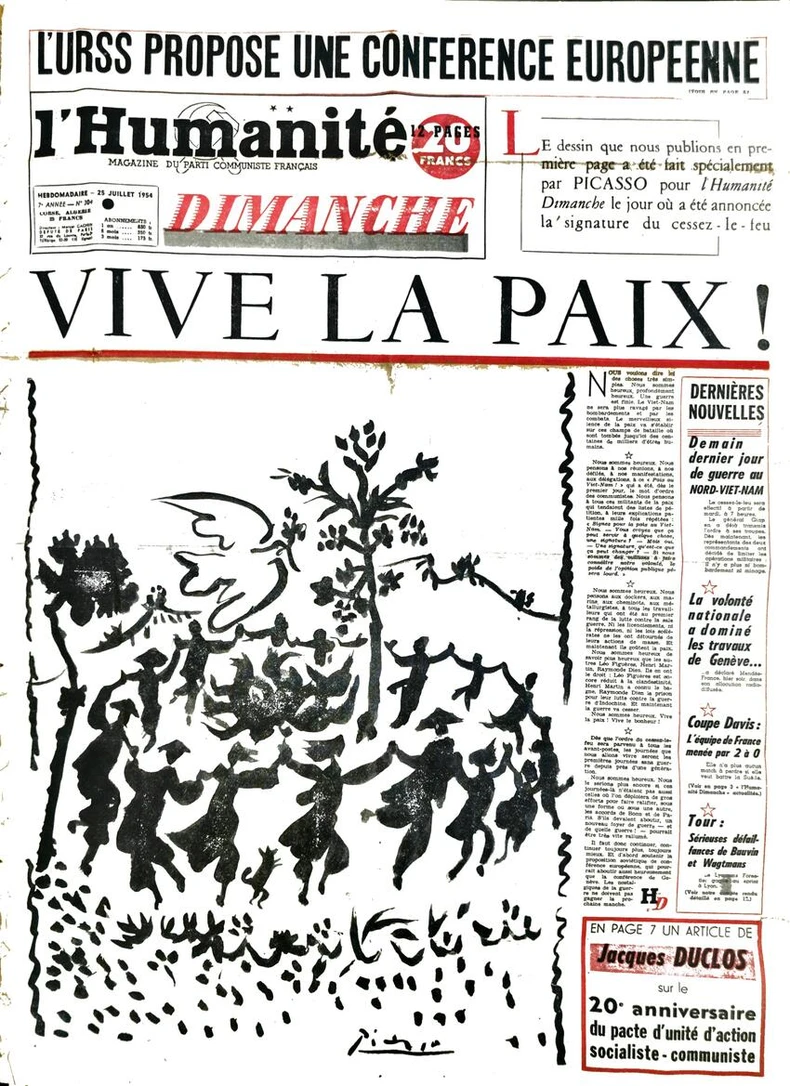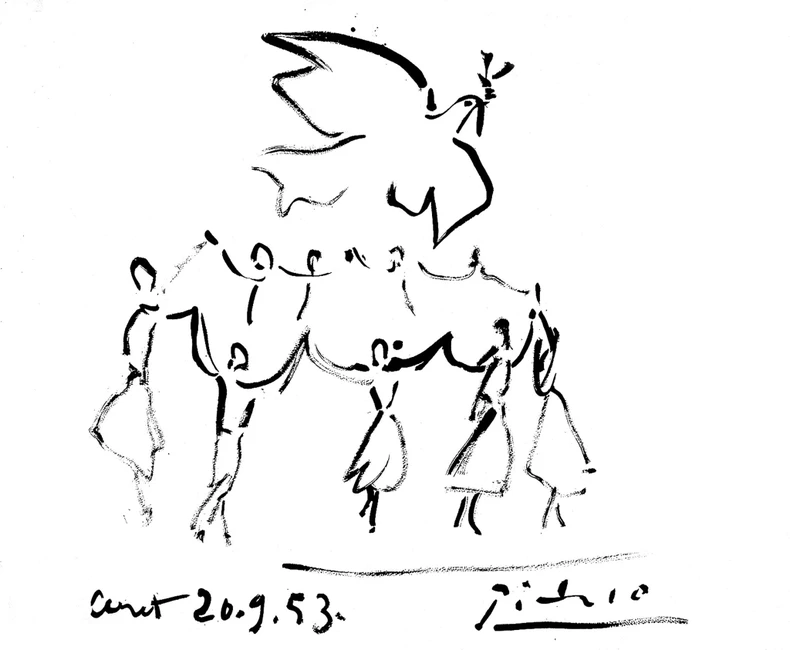 |
The painting "Long Live Peace" was published in the special issue of the newspaper L'Humanité on July 25, 1954. The original (size: 65.5cm x 55.5cm) is currently kept at the Museum of Art and History in the city of Saint Denis, a northern suburb of Paris.
During the years of resistance against French colonialism, the Nhân Đạo newspaper always stood side by side with and supported Vietnam, was the leading flag on the propaganda front, mobilized and gathered support from communists and peace-loving French people as well as international friends towards the resilient and heroic country of Vietnam. One of the international friends who always expected peace to be restored soon in Vietnam was the famous painter Pablo Picasso (1881-1973).Born on October 25, 1881 into a traditional artistic family in the port city of Malaga in southern Spain, he is a painter and sculptor, commonly known as Pablo Picasso or Picasso. As one of the world's most prominent artists in the 20th century, he, along with Georges Braque, was the founder of the Cubist school in painting and sculpture. "Dove" is the theme that Picasso cherished since his youth, through which he wanted to convey all his soul and desire for freedom and peace. Picasso's doves of peace, as the voice of peace, have become famous all over the world and contributed to awakening the spirit of peace.
 |
In the painting "The Peaceful Sardane," the Sardane is a traditional Catalan (Spain) dance where people hold hands in a circle to music played by a combination of many musical instruments (cobla).
The painting "Long Live Peace" congratulating Vietnam was inspired by the painting "Peaceful Sardinia" that he painted on September 20, 1953, which is kept at the Museum of the village of Céret (now a city) in France, bordering Spain. He stayed here in 1911, 1912, 1913, and then 1953, regularly meeting and discussing with French communists in this area. On September 20, 1953, the French Communist Party branch in the city of Céret held a meeting to honor Picasso. Here, he painted the painting "Peaceful Sardinia" as a gift to the French Communist Party branch in Céret. A few years later, this painting was kept at the Museum of Contemporary Art in the city of Céret. After the Geneva Agreement, when the US intervened in Vietnam, he also used the language of painting to protest the bloody war and express his feelings for the Vietnamese people. The Editorial Board of the Nhan Dan newspaper said: With deep affection and support for the aspirations of the Vietnamese people in the long struggle to regain peace and independence, Picasso had the idea and completed it very quickly to send it to the special issue of the Nhan Dan newspaper to celebrate this historic event. With Picasso's painting published on the front page of the special issue on July 25, 1954, the French Communist Party's Nhan Dan newspaper also had an editorial expressing such heartfelt congratulations: We all share the same happiness. Long live peace! Long live happiness! Source: https://nhandan.vn/cau-chuyen-ve-buc-hoa-cua-picasso-mung-hoa-binh-lap-lai-o-viet-nam-post819842.html

![[Photo] Cutting hills to make way for people to travel on route 14E that suffered landslides](https://vphoto.vietnam.vn/thumb/1200x675/vietnam/resource/IMAGE/2025/11/08/1762599969318_ndo_br_thiet-ke-chua-co-ten-2025-11-08t154639923-png.webp)


































![[Photo] "Ship graveyard" on Xuan Dai Bay](https://vphoto.vietnam.vn/thumb/1200x675/vietnam/resource/IMAGE/2025/11/08/1762577162805_ndo_br_tb5-jpg.webp)








![[Video] Hue Monuments reopen to welcome visitors](https://vphoto.vietnam.vn/thumb/402x226/vietnam/resource/IMAGE/2025/11/05/1762301089171_dung01-05-43-09still013-jpg.webp)
































































Comment (0)